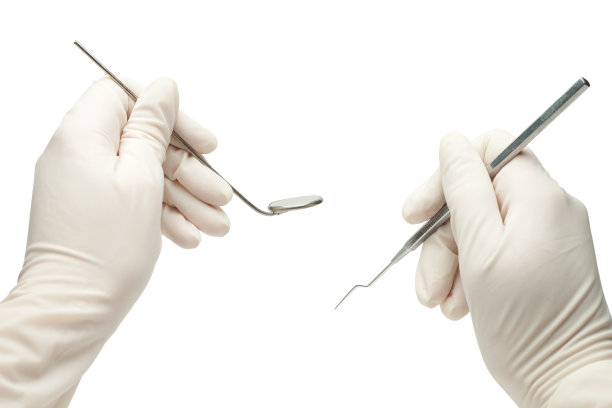The Essential Guide to Extracting a Tooth for Optimal Oral Health and Recovery Techniques
Summary: Extracting a tooth can be a crucial procedure for maintaining optimal oral health. This guide elaborates on the steps and considerations involved in tooth extraction, including when it is necessary, the extraction process itself, post-extraction care, and recovery techniques. Each aspect is detailed to ensure patients are informed and have a smoother experience. Emphasizing the importance of professional dental advice and treatment, this article aims to equip readers with essential knowledge for both the extraction procedure and the following recovery phase. With this understanding, individuals can better navigate their oral health needs.
1. When Tooth Extraction is Necessary

Tooth extraction becomes necessary when a tooth is severely damaged due to decay, trauma, or gum disease. A cavity may reach a point where restoration methods like fillings or crowns are no longer viable. In such cases, the tooth may become infected, potentially leading to more severe health complications. Therefore, understanding when extraction is warranted is critical.
Another situation calling for extraction is overcrowding. This is often necessary before orthodontic work, allowing space for teeth to move into their ideal positions. Dentists may recommend the removal of one or more teeth to create an optimal environment for aligners or braces to work effectively. Awareness of this necessity can alleviate concerns about aesthetic outcomes or discomfort.
Impacted wisdom teeth represent yet another reason for extraction. As these molars emerge typically in late adolescence to early adulthood, they often do not have sufficient space to grow properly. This can lead to pain, swelling, or other complications. Dentists typically recommend extracting impacted wisdom teeth to prevent future dental issues.
2. The Tooth Extraction Procedure Explained
The tooth extraction procedure is generally performed in a dental clinic and can be done under local anesthesia or sedation, depending on the complexity of the case and patient preference. The dentist will first conduct a thorough examination, often utilizing X-rays, to assess the tooths condition and plan the procedure accordingly. This ensures all areas are well understood before moving forward with the extraction.
During the extraction, the dentist will loosen the tooth using specialized instruments, then gently remove it from the socket. Care is taken to minimize trauma to the surrounding tissues—this contributes to a smoother recovery process. In cases involving impacted teeth, an incision may be necessary to remove bone or tissue around the tooth, making the extraction more involved.
Post-extraction, the dentist will instruct the patient on specific aftercare routines. Proper guidance is essential to reduce discomfort and promote healing. These directions will typically include recommendations on pain management, dietary modifications, and hygiene practices to facilitate a successful recovery.
3. Post-Extraction Care Techniques
Post-extraction care is crucial in avoiding complications such as dry socket and infections. After the procedure, its common to experience swelling and discomfort, which can be alleviated by applying ice packs to the outside of the face. Over-the-counter pain relievers can also aid in managing pain. Patients need to follow their dentists recommendations on medications to ensure effective pain control.
Dietary changes should also be implemented during the initial recovery period. Soft foods such as yogurt, applesauce, and mashed potatoes are advisable to eat while avoiding anything crunchy or chewy that could disturb the extraction site. Staying hydrated is essential, yet one should avoid using straws to prevent pressure that could dislodge the blood clot at the extraction site.
Maintaining proper oral hygiene is equally important. Gentle brushing of the remaining teeth and rinsing with salt water can help keep the area clean without disrupting the healing process. Patients should avoid vigorous rinsing or spitting for a few days to protect the clot. Following these care techniques can significantly contribute to a quicker, more pleasant recovery.
4. The Importance of Professional Dental Follow-Up
Following tooth extraction, it is fundamental to schedule professional follow-up appointments to monitor healing. Dentists will assess the extraction site for signs of infection and ensure that the surrounding gum tissue is healing correctly. These visits also provide an opportunity to discuss further treatment options, such as implants or dentures if necessary.
Furthermore, follow-up visits help identify any residual issues related to other teeth or overall oral health that may need attention. Regular dental check-ups can help maintain optimal oral health and preempt other potential concerns. Being proactive about follow-ups encourages better long-term oral care.
Ultimately, the extraction process emphasizes the role of qualified dental professionals in ensuring patient health. Consultation with a dentist before and after the procedure enhances the recovery process and empowers patients to make informed decisions about their oral health moving forward.
Summary:
Understanding the intricacies of tooth extraction, from recognizing when it is necessary to engaging in comprehensive aftercare, can significantly influence overall oral health. Professional guidance throughout this process ensures a smooth experience and aids in recovery. Proper follow-up is essential to guarantee complete healing and address any ongoing dental needs. A proactive approach to dental health ultimately leads to a lifetime of better oral hygiene and confidence.
This article is compiled by Vickong Dental and the content is for reference only.


